How to: Infused Honey
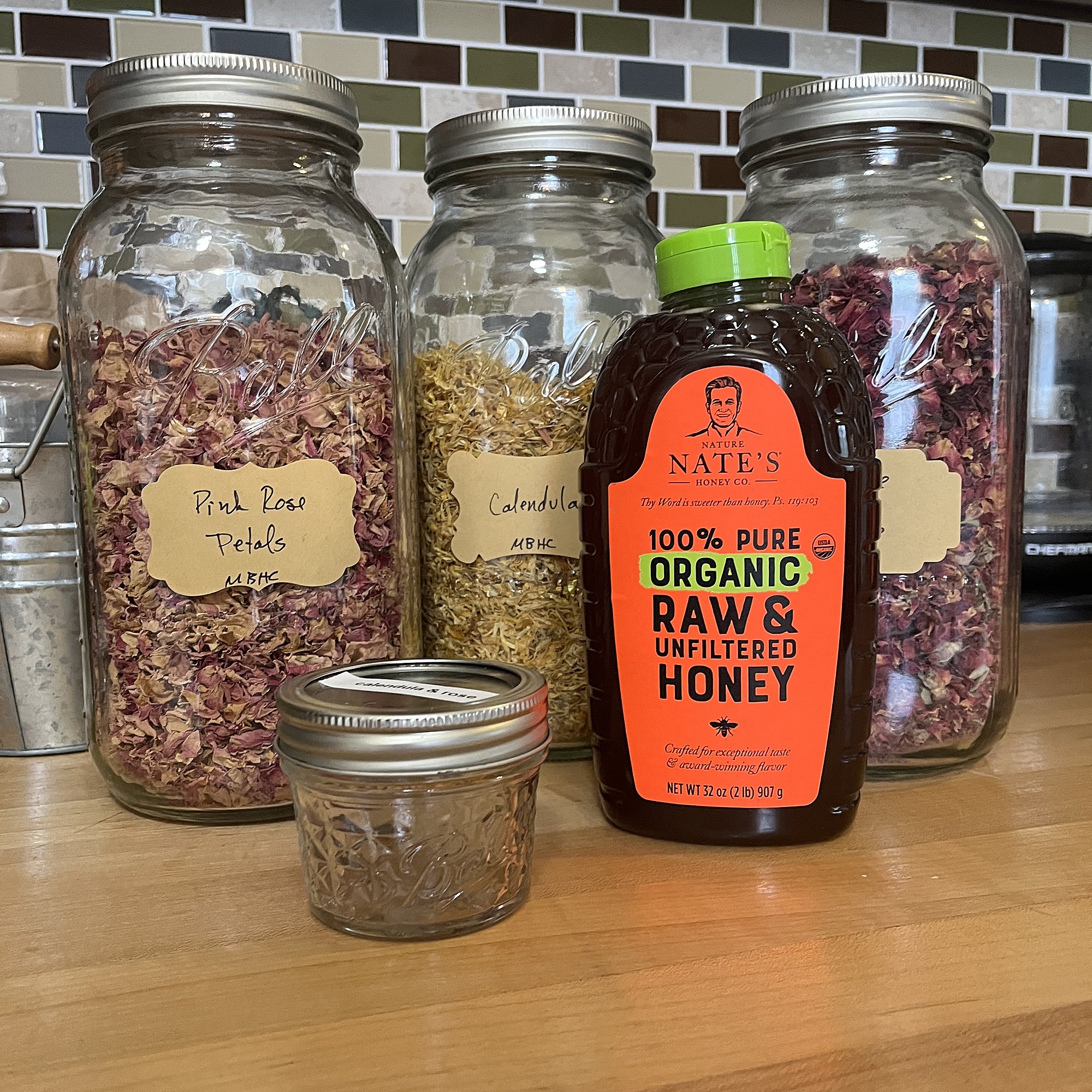
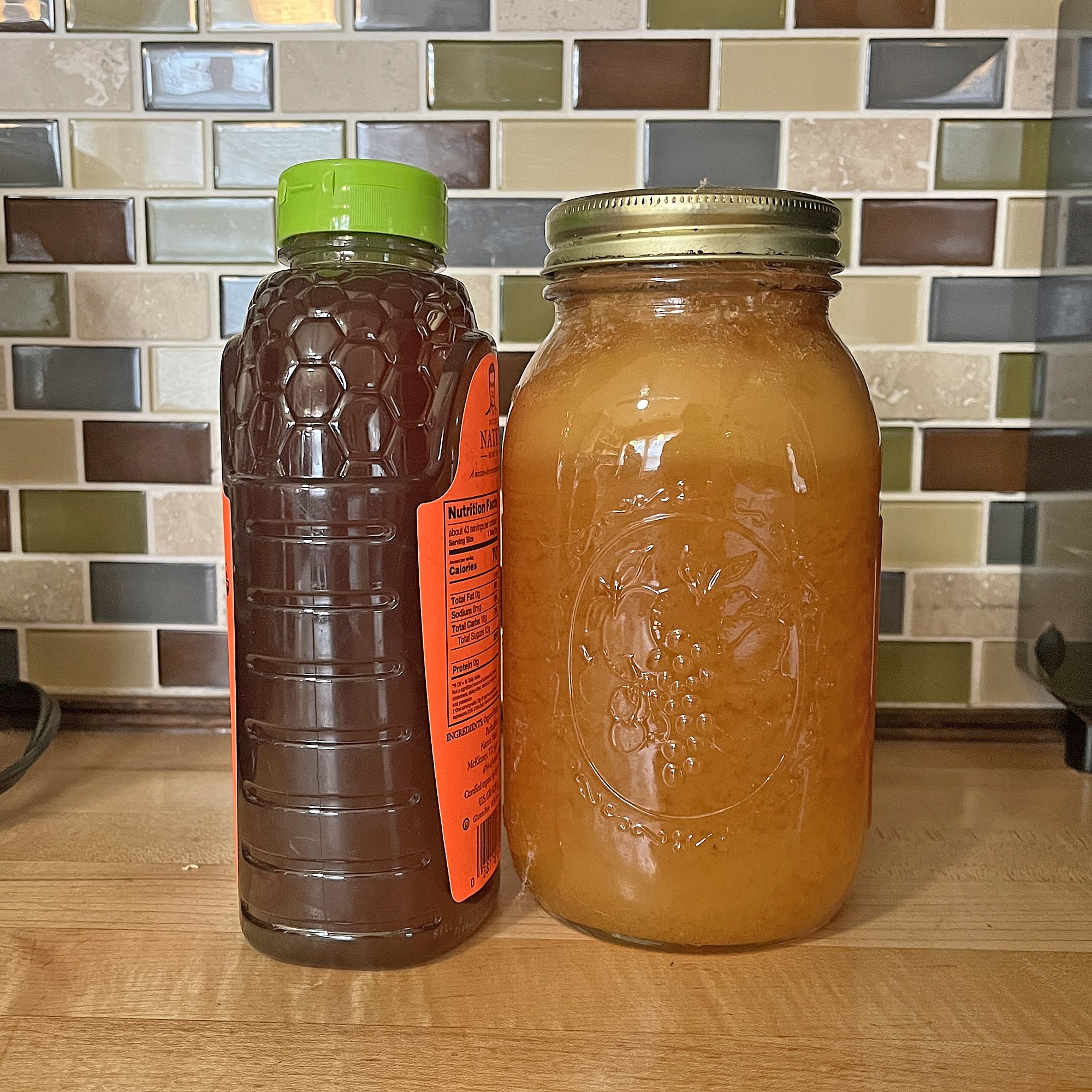
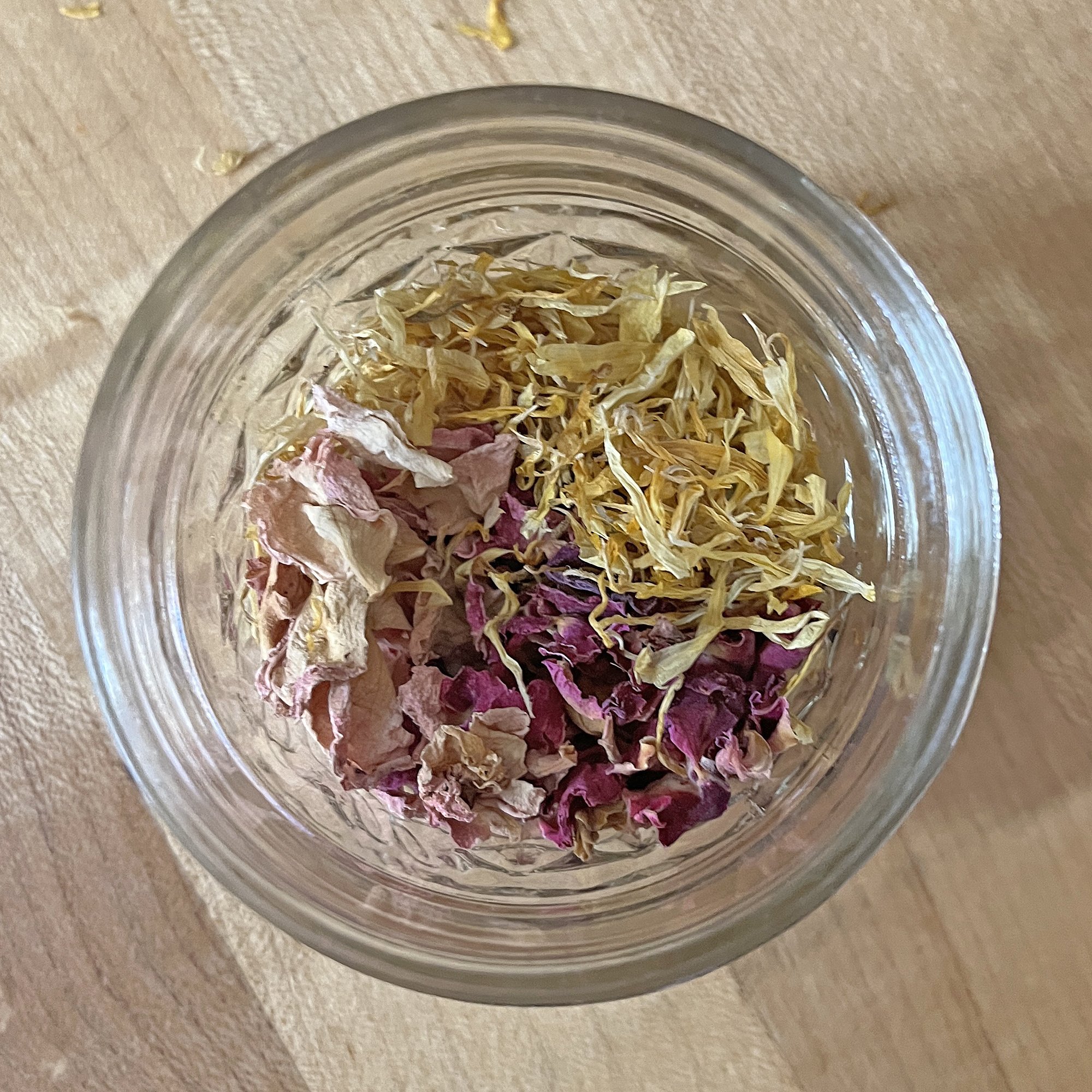
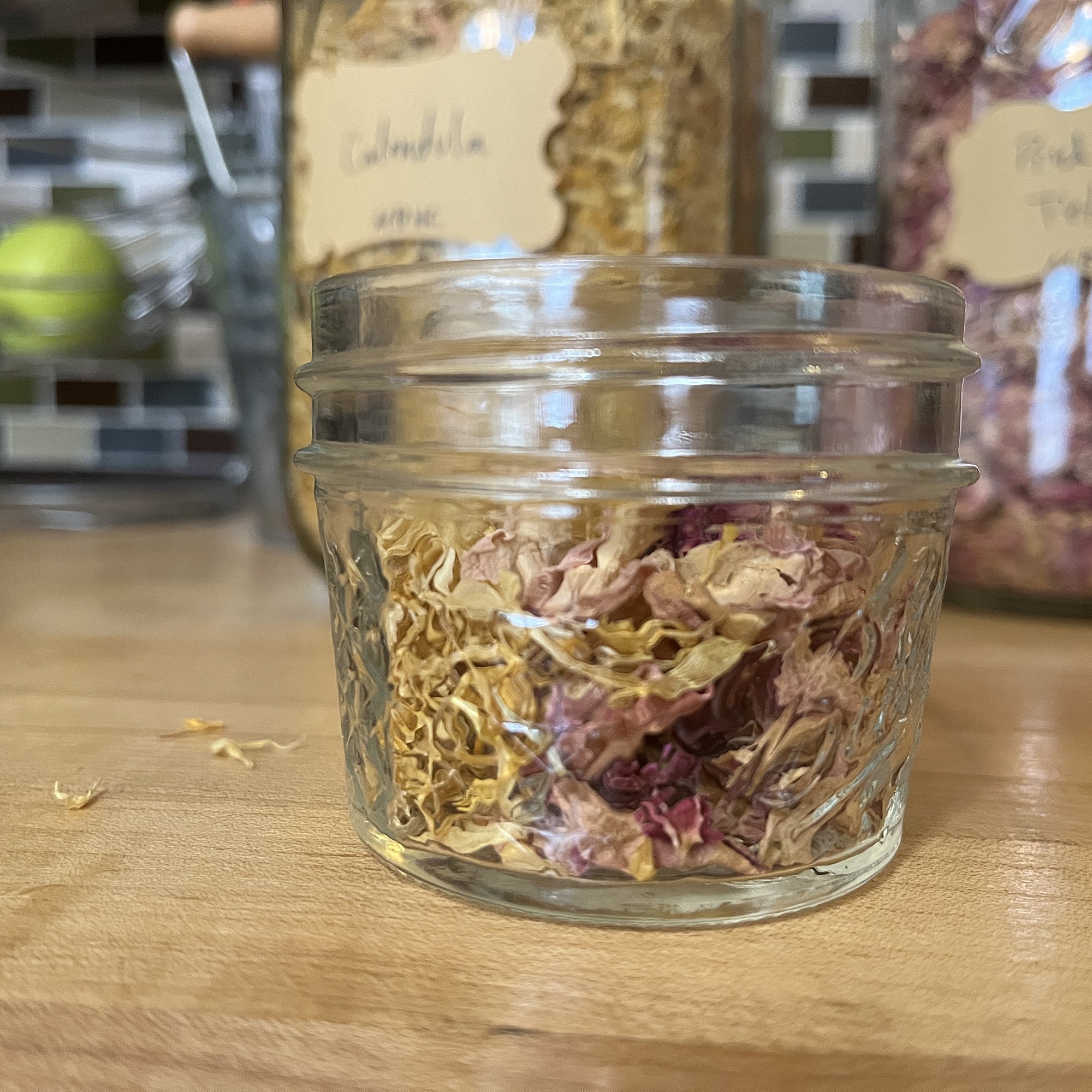
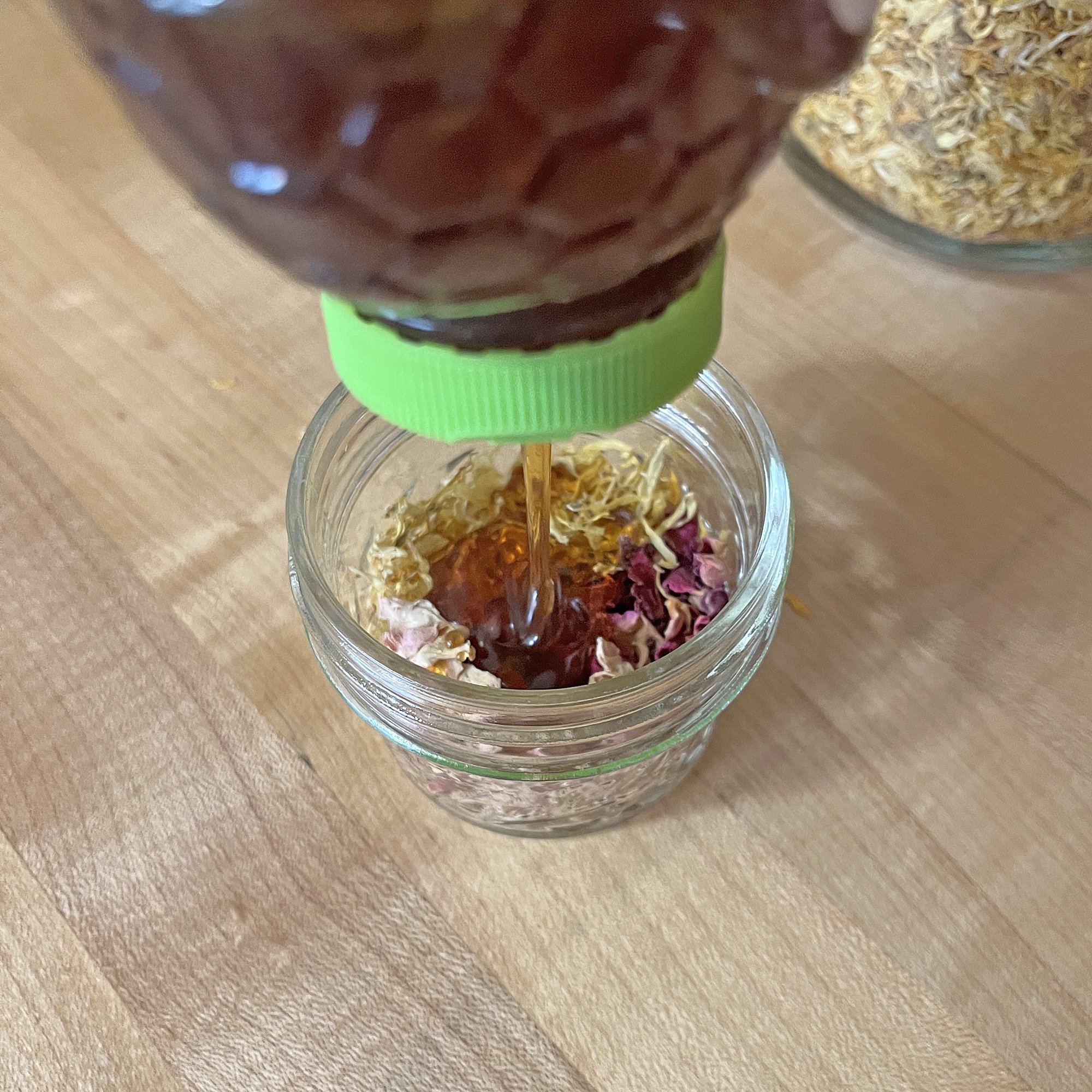
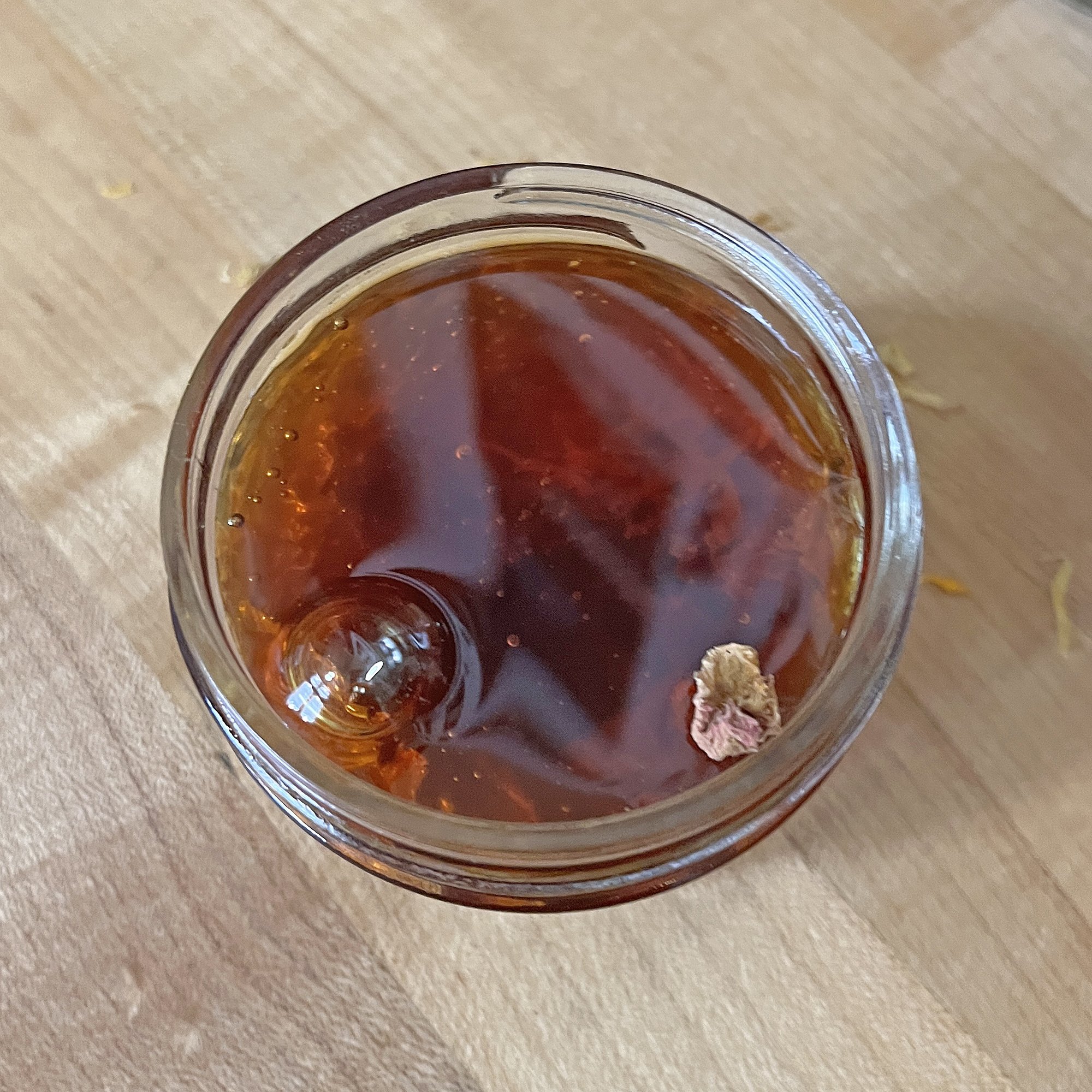
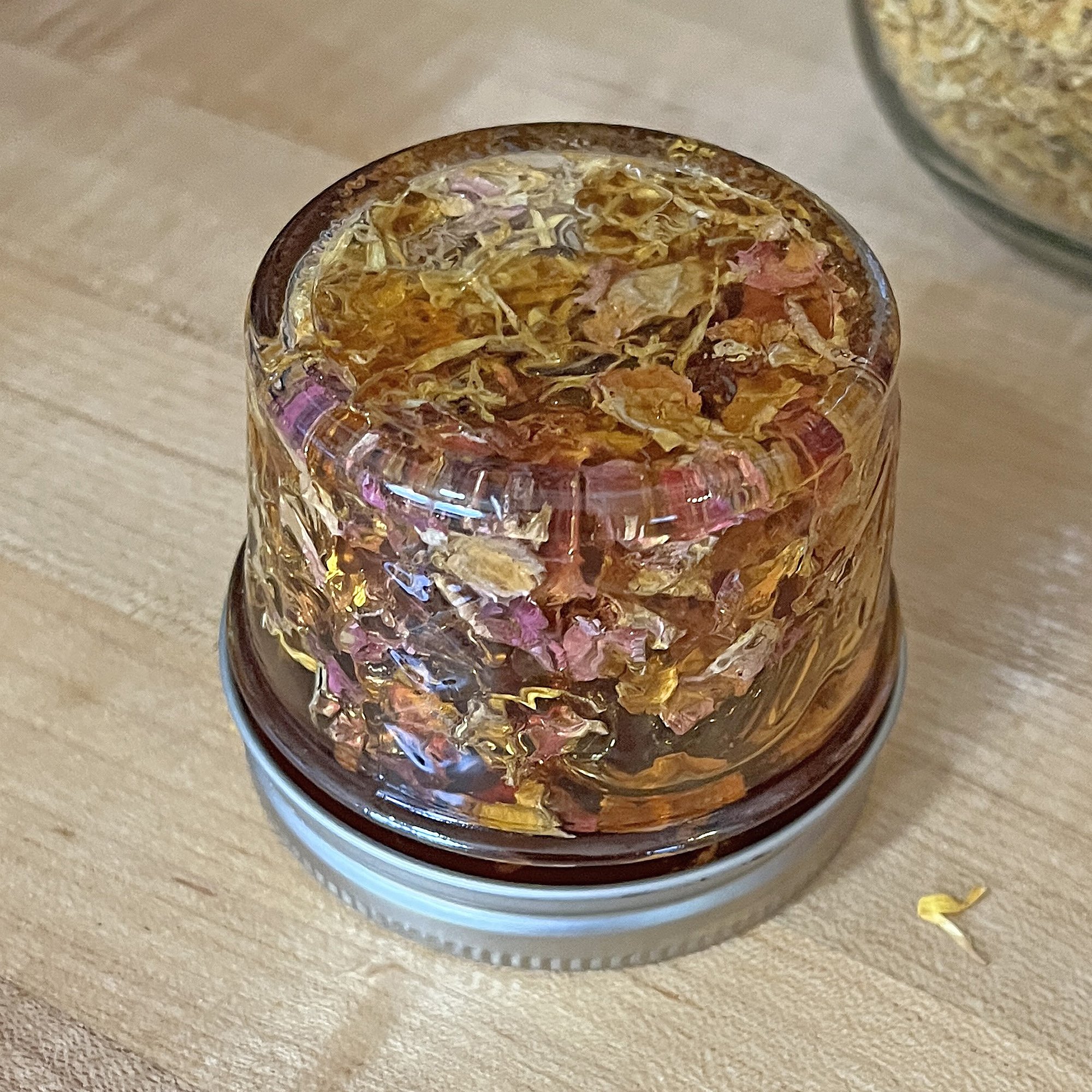
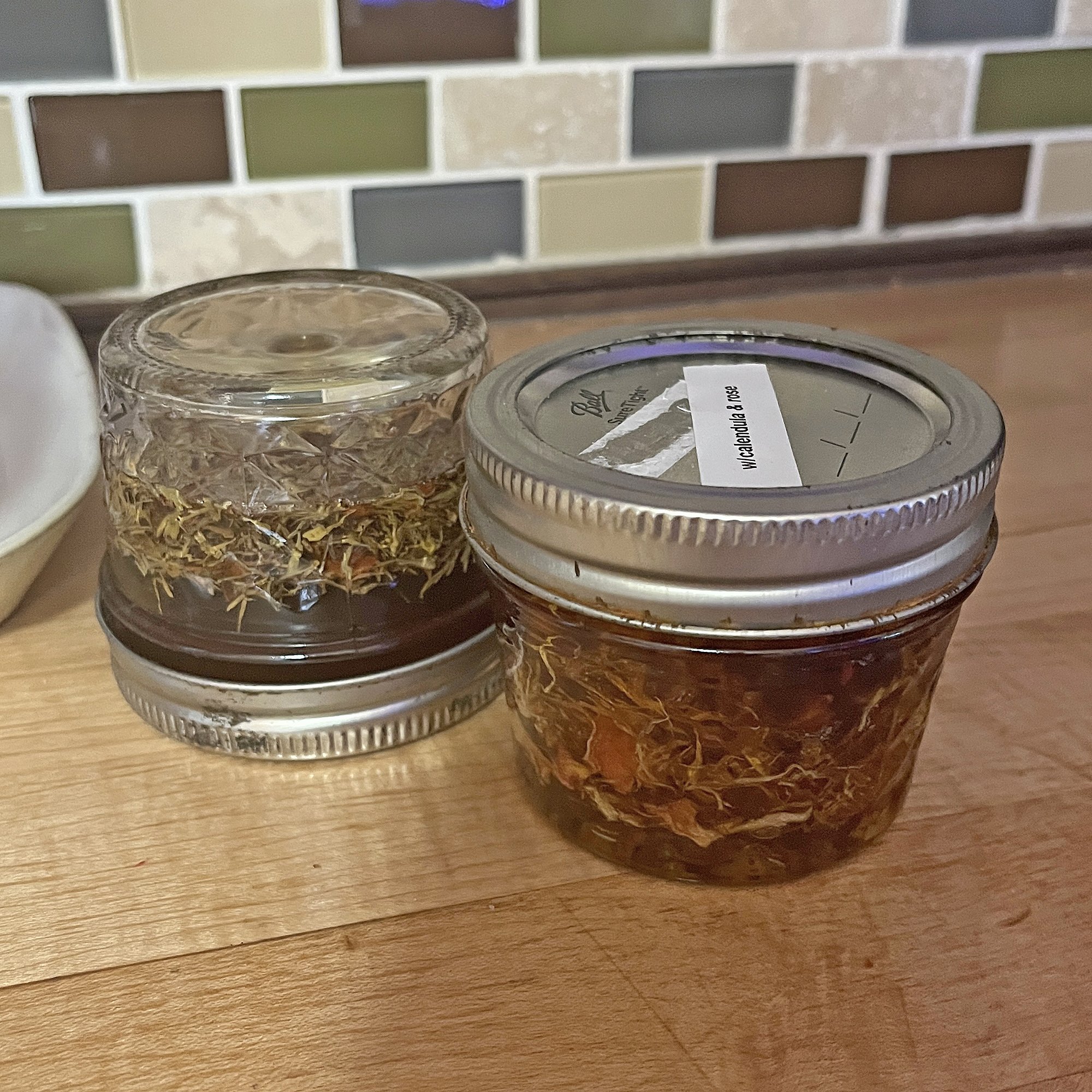
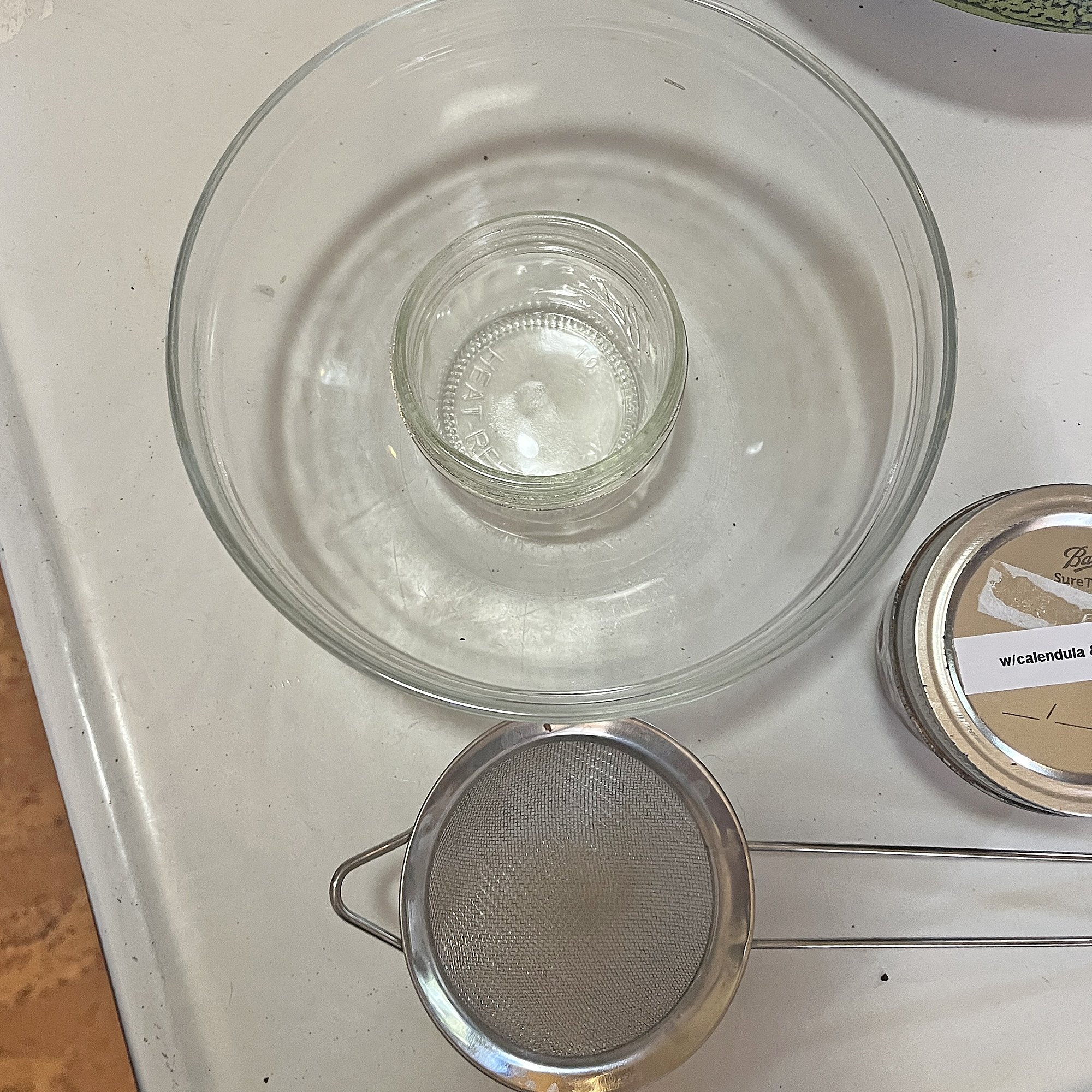
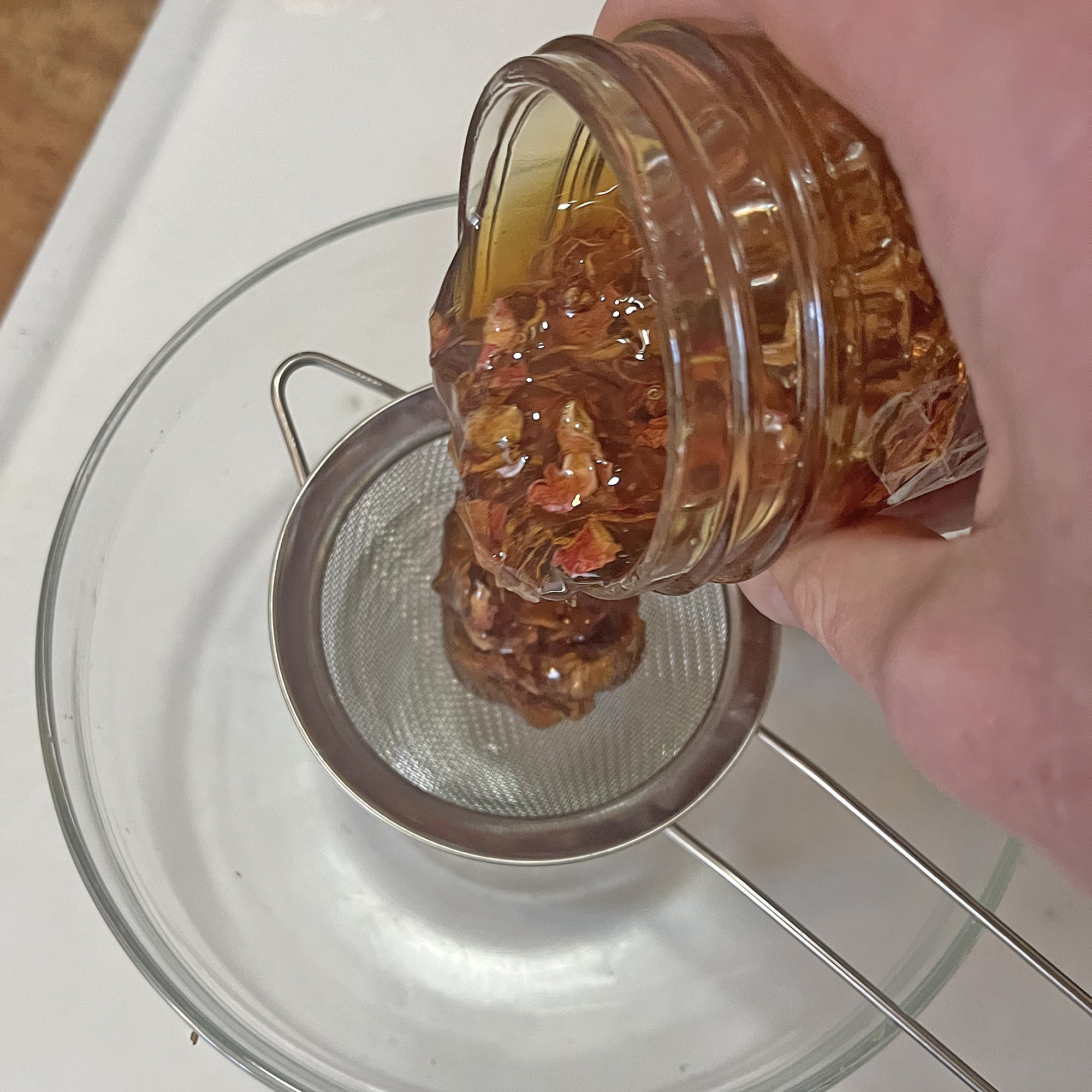
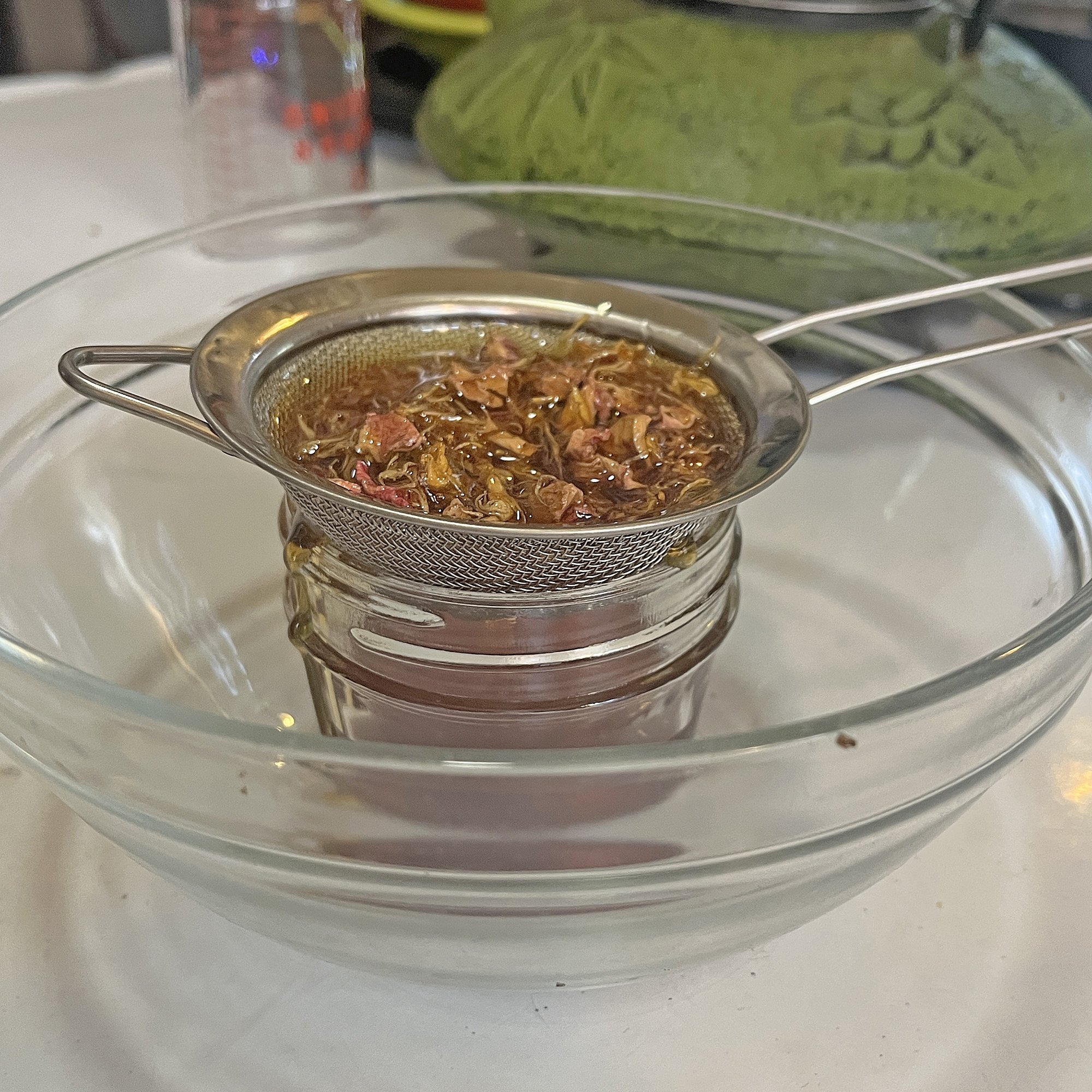
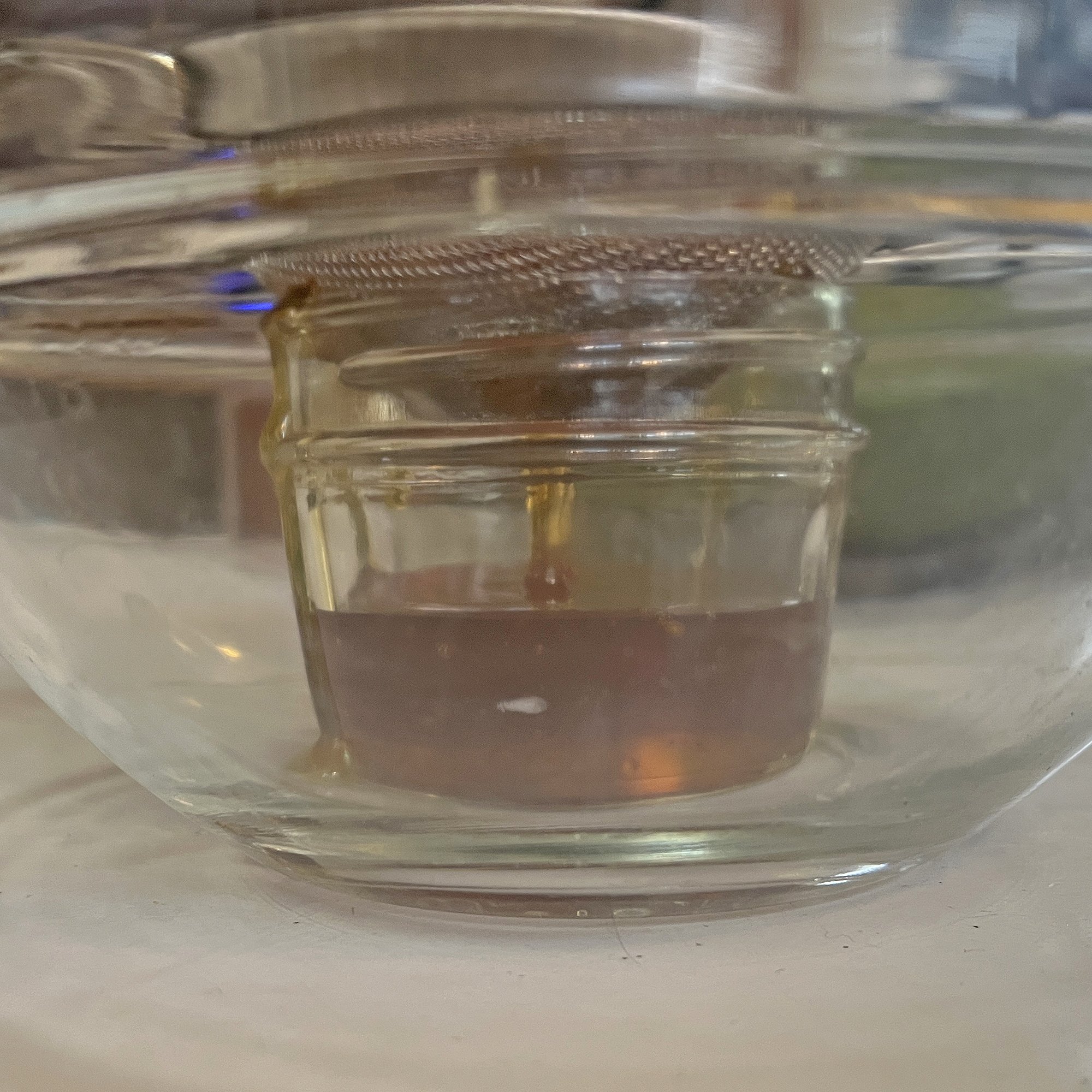
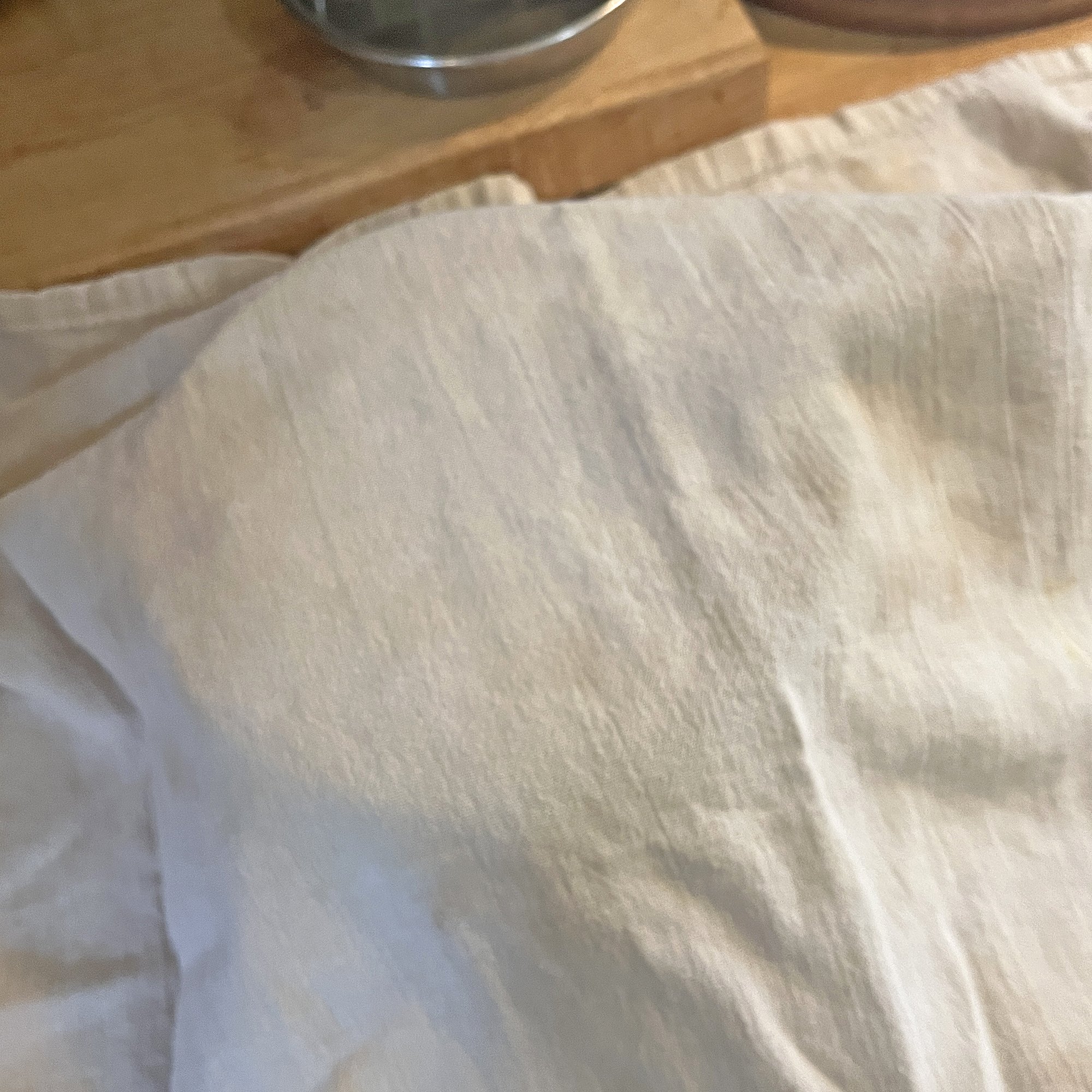
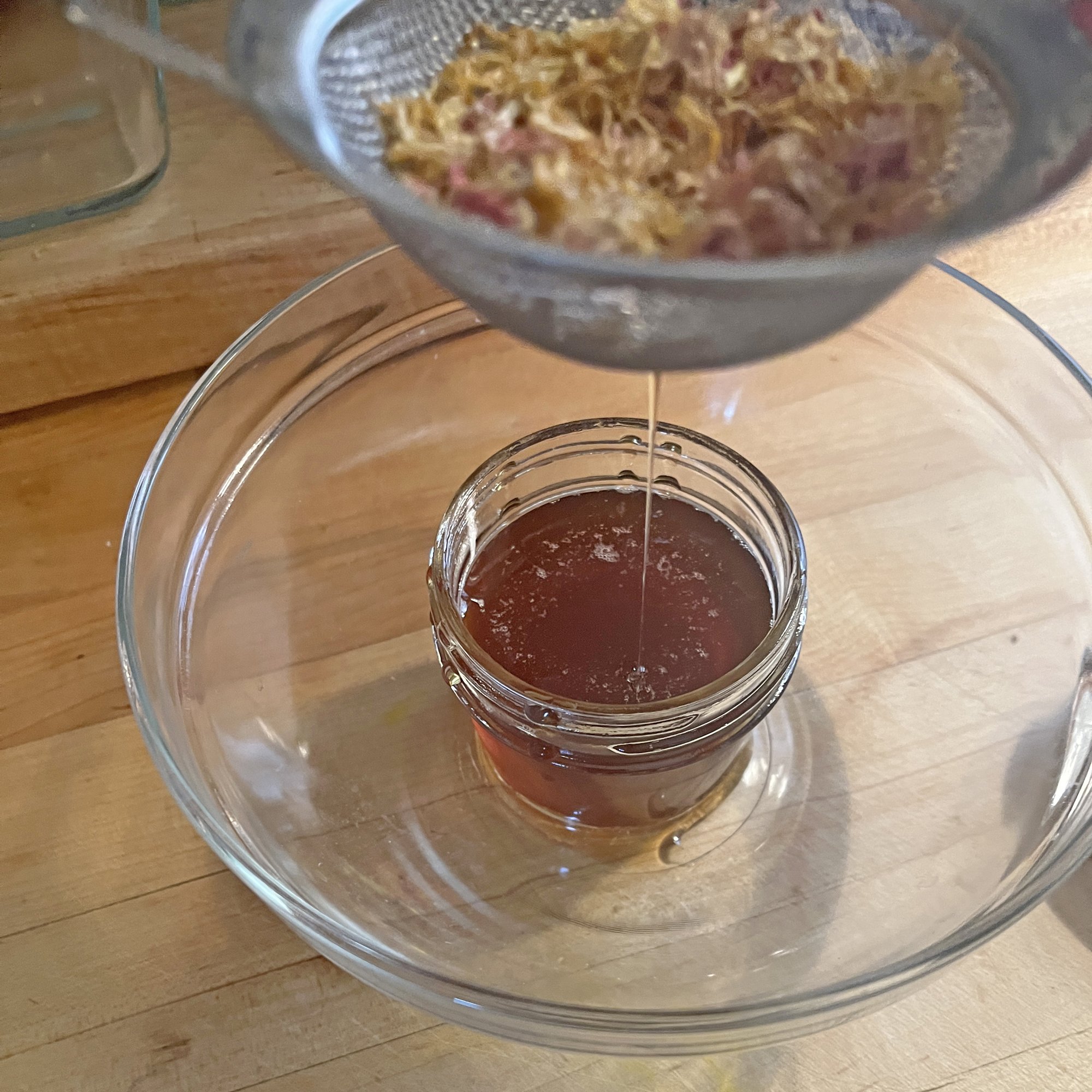
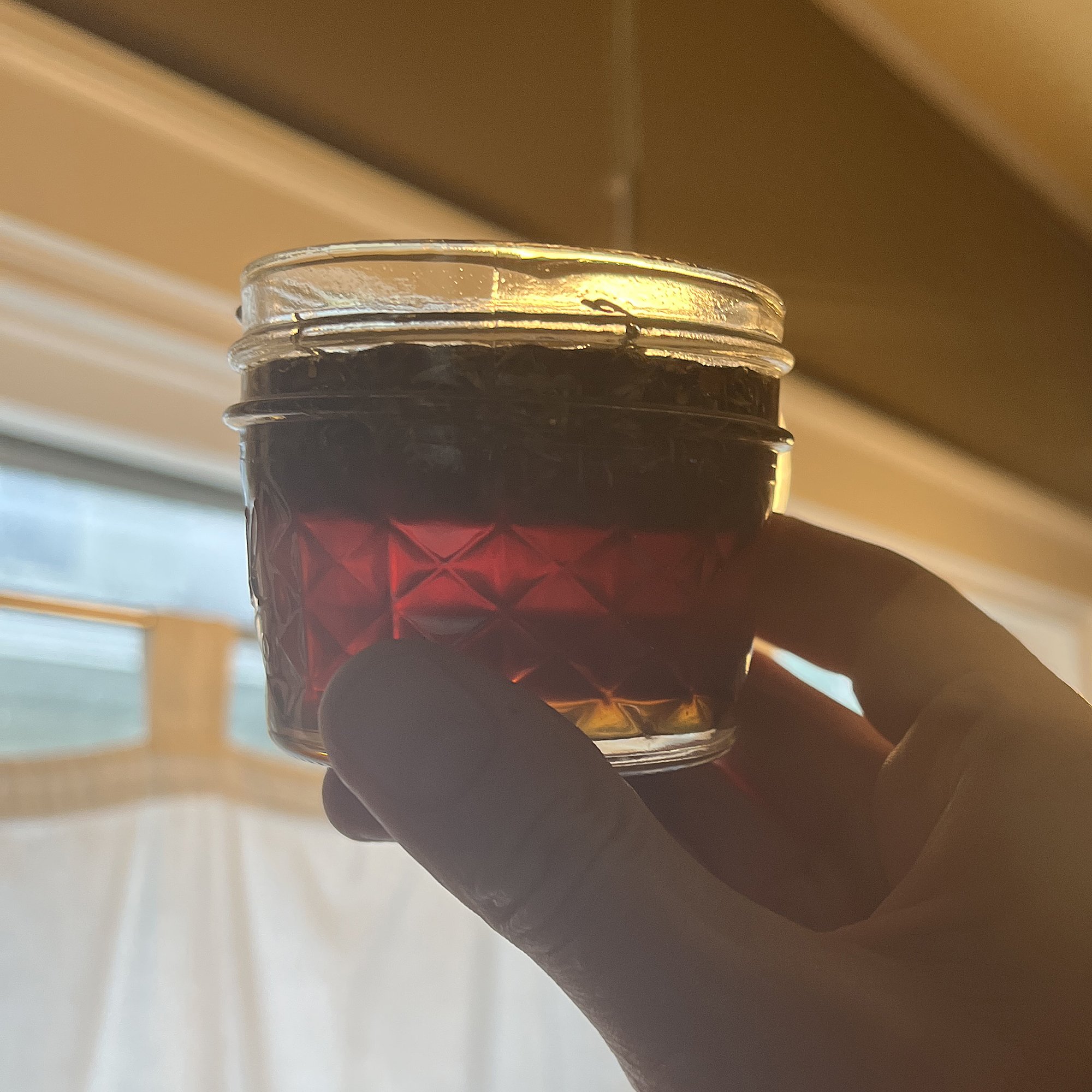
I thought honey would be appropriate for Lughnasa (Lammas or Lughnasadh, take your pick). About a year ago, I started infusing honey for food and skin care. This example is for a calendula and pink rose petals facial mask.
Honey is loaded with enzymes, vitamins & minerals, and even boasts antimicrobial properties. Topically, it reduces redness and swelling and helps prevent or slow infection.
Topically, calendula helps skin heal faster and treats a variety of skin conditions. Taken internally, it also helps ease gastrointestinal inflammation. Mix with your regular tea—the petals have almost no flavor.
Topically, rose petals soothe skin and help treat bruises. Taken internally, they’re also good for hearth health and stress reduction. Add to black tea for a subtle scent that’s a cousin to jasmine green tea.
For an astringent honey mask, try infusing with thyme leaves and cinnamon chips.
Thyme is a natural antibacterial and antifungal, good for treating skin infections as well as insect stings and bites. Taken internally, it boosts the immune system, helps with infections, and alleviates cough.
Cinnamon is a natural astringent and antimicrobial, good for preventing acne. Taken internally, cinnamon can also help lower glucose levels and relieve gas. And it’s a delicious a honey infusion.
Ingredients
Raw honey—Pick your brand or buy from your local beekeeper, though look for some with low to no crystals. Used in a facial mask, crystals can irritate skin. To remove crystals, heat the honey in a double broiler. The temperature should not exceed 110 degrees F. Anything hotter risks damaging the honey’s properties if the temperature exceeds 110 degrees F. So, I often use packaged just to make life simpler.
Your herbs of choice—amounts are approximate. For petals, leaves, and other loose items (as with calendula & rose in the photos), I fill the jelly jar almost to the lid line, unpacked. For finer, less bulky herbs (like thyme and cinnamon chips), I fill about 1/4" deep. (Our Instagram feed features info on the magical and herbalism properties of the herbs in our shop.)
Two or more clean 4-ounce jelly jars—You can infuse larger amounts, but honey will naturally crystalize on its own over time, so working in small batches can be more cost-effective. Once it crystallizes, use it to sweeten tea instead of on your skin.
A small screen strainer—Look for one that will sit comfortably in the jelly jars’ mouth without its bottom sinking too deeply into the jar (this allows for cleaner filtering).
Directions: Infusing
The act of making of the infused honey can be turned into a spell simply by adding your own intention and/or invocation. Using this herbal combination, healing, romance, friendship, comfort, and/or strength would be appropriate.
Wash the jelly jar and lid with hot water and soap. Dry it completely. Water will affect honey’s properties, so be sure the jar and lid are fully dry before moving ahead.
Add your herbs.
Pour in honey. With looser herbs (calendula & rose), I fill the jar almost to the top, leaving enough room for bubbles. The honey will work its way down into the petals. For less dense herbs (thyme and cinnamon), I fill it within 1/4" to 1/2" of the top.
Put the lid on, label the jar, and flip it over. This helps the honey fully coat the herbs.
Leave it in a room temperature spot outside of direct sunlight.
For the next month, flip the jar one (or more) times a day. The herbs will sink back down through the honey each time you flip.
After a month, fully clean and dry a second jelly jar (you can reuse the labeled lid). Place the strainer in the top of the new jar, open the infusion jar, and pour contents slowly into the strainer.
The honey will almost fully drip off of the herbs, but it takes time, so I cover the setup loosely with a light towel and leave overnight.
Dump out the used herbs and cap your infused honey. If you use a yummy combo of herbs, try brewing them afterward to make a sweet tea.
Directions: Facial Mask
Test a patch of skin, particularly if using the thyme & cinnamon mixture.
Fully wash your face and dry. Any sweat or oil left on will cause the honey to separate on your skin and not work as well.
Apply a light layer to your face. Make sure it’s enough to coat your skin, but don’t pour it on like a baklava. I work it into my hairline and down my throat and décolleté. It’s great for under eyes, but be careful—while honey doesn’t burn, but it’s uncomfortable if it gets in your eyes.
Relax for 10 to 15 minutes and let the honey do its thing. Warning—it will drip. I put a towel on the bed and lay down. It also tickles a little as it slowly runs down your face, but if you need to rub or scratch, just lick your finger clean afterward.
Rinse away the honey and use a mild cleanser or light facial scrub—and wash your hair if you worked it into your hairline. Follow with a light moisturizer.
I always see a noticeable reduction in redness and inflammation immediately afte. Drop us a note if you try this recipe and let me know how it worked for you.
